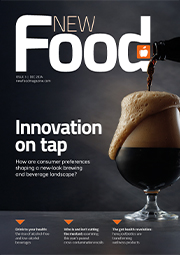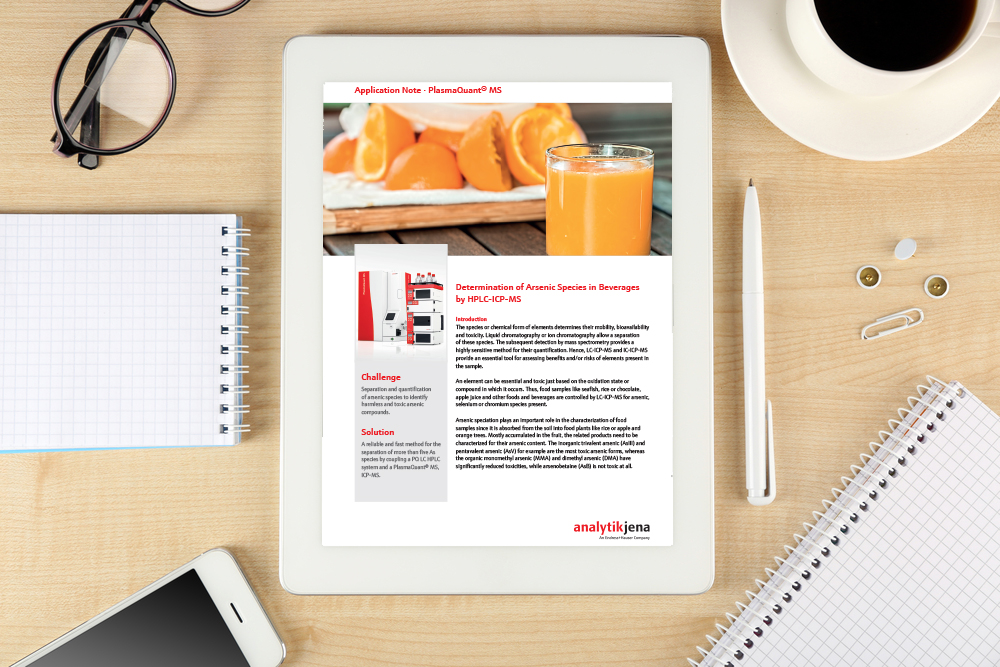Determination of arsenic species in beverages by HPLC-ICP-MS
- Like
- Digg
- Del
- Tumblr
- VKontakte
- Buffer
- Love This
- Odnoklassniki
- Meneame
- Blogger
- Amazon
- Yahoo Mail
- Gmail
- AOL
- Newsvine
- HackerNews
- Evernote
- MySpace
- Mail.ru
- Viadeo
- Line
- Comments
- Yummly
- SMS
- Viber
- Telegram
- Subscribe
- Skype
- Facebook Messenger
- Kakao
- LiveJournal
- Yammer
- Edgar
- Fintel
- Mix
- Instapaper
- Copy Link
Posted: 11 July 2018 | Analytik Jena AG | No comments yet
The species or chemical form of elements determines their mobility, bioavailability and toxicity. Liquid chromatography or ion chromatography allow a separation of these species…
The subsequent detection by mass spectrometry provides a highly sensitive method for their quantification. Hence, LC-ICP-MS and IC-ICP-MS provide an essential tool for assessing benefits and/or risks of elements present in the sample.
An element can be essential and toxic just based on the oxidation state or compound in which it occurs. Thus, food samples like seafish, rice or chocolate, apple juice and other foods and beverages are controlled by LC-ICP-MS for arsenic, selenium or chromium species present.
Arsenic speciation plays an important role in the characterisation of food samples since it is absorbed from the soil into food plants like rice or apple and orange trees. Mostly accumulated in the fruit, the related products need to be characterised for their arsenic content. The inorganic trivalent arsenic (AsIII) and pentavalent arsenic (AsV) for example are the most toxic arsenic forms, whereas the organic monomethyl arsenic (MMA) and dimethyl arsenic (DMA) have significantly reduced toxicities, while arsenobetaine (AsB) is not toxic at all.
The application note describes a gradient method for the PQ LC HPLC system developed to separate five arsenic species with special attention to well separated chromatographic signals in shortest time. To test the method‘s applicability for real samples, commercially available apple juice and orange juice samples were analysed.
The rest of this content is restricted - login or subscribe free to access


Why subscribe? Join our growing community of thousands of industry professionals and gain access to:
- bi-monthly issues in print and/or digital format
- case studies, whitepapers, webinars and industry-leading content
- breaking news and features
- our extensive online archive of thousands of articles and years of past issues
- ...And it's all free!
Click here to Subscribe today Login here
Related content from this organisation
- Edible oil processing: How to monitor elements and compounds
- Palm oil – an edible oil case study in quality, safety and process monitoring
- Palm Oil – an edible oil case study in quality, safety and process monitoring by means of elemental analysis and UV/Vis spectroscopy
- Determination of arsenic species in beverages by HPLC-ICP-MS
Related topics
Contaminants, Food Safety, Health & Nutrition, Ingredients, Liquid chromatography–mass spectrometry (LC-MS), Quality analysis & quality control (QA/QC)









